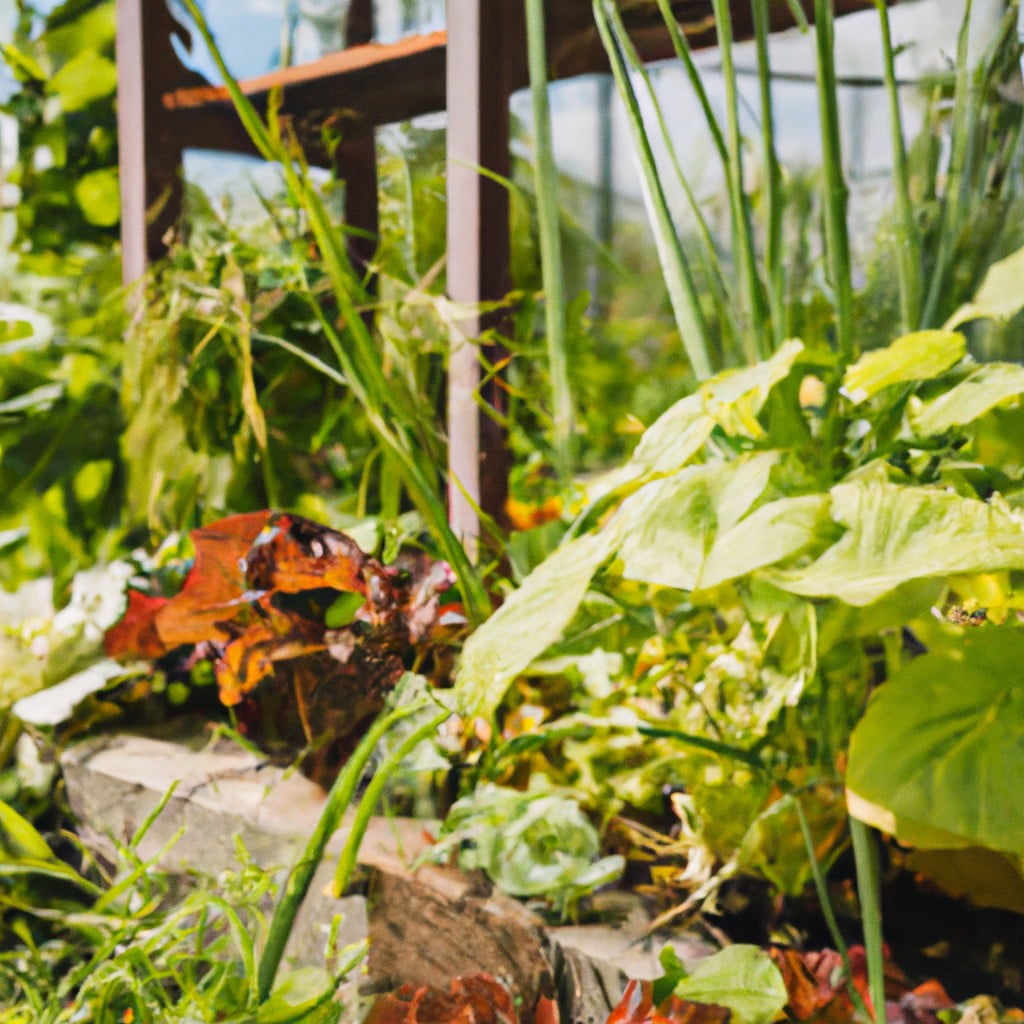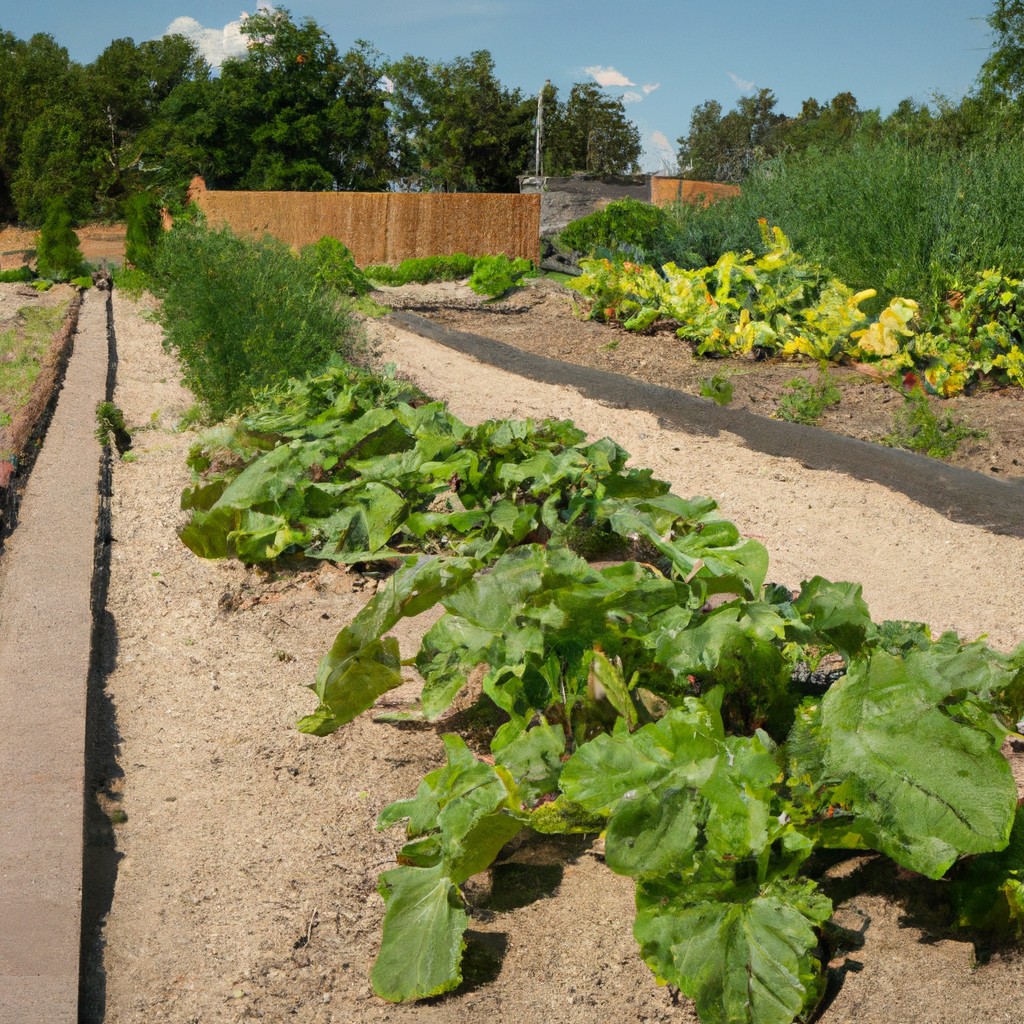Permaculture and regenerative agriculture are transformative farming practices that aim to repair damaged ecosystems, boost biodiversity, and create sustainable food systems.
Permaculture and regenerative agriculture are powerful and sustainable farming methods that aim to work harmoniously with nature, rather than against it.
These two practices have the potential to revolutionize our food system, improve biodiversity, and mitigate climate change by sequestering carbon in the soil.
This article delves into the principles, practices, and benefits of both permaculture and regenerative agriculture, offering comprehensive insights into how these sustainable farming methods can help create a resilient and productive agricultural landscape.
Keep reading to discover the transformative potential of these sustainable farming methods, and how they can contribute to a healthier planet.
Key takeaways:
- Permaculture and regenerative agriculture aim to repair ecosystems sustainably.
- Permaculture emphasizes sustainability and self-sufficiency in any setting.
- Regenerative agriculture improves soil health and captures carbon from the atmosphere.
- Permaculture, organic farming, and regenerative agriculture have different focuses.
- Both permaculture and regenerative agriculture enhance biodiversity and resilience.
Look Inside:
Understanding Permaculture

Emphasizing ecological sustainability and self-sufficiency, permaculture combines landscape design, architectural planning, and ecology. It focuses on simulating or utilizing patterns found in nature to form a thriving system. Key to permaculture is the idea that the created ecosystem can sustain itself with minimum human intervention, thus helping to reduce our carbon footprint.
Not restricted to farms alone, permaculture principles can be applied in any setting – urban apartments, suburban yards, or commercial agriculture. Diversity, resiliency, and the creation of beneficial relationships are key aspects, resulting in systems that require less energy to maintain, are resistant to disease, and produce healthy, abundant food.
Understanding and Implementing Regenerative Agriculture
Regenerative agriculture is centered on improving the health and vitality of farm soil. It is a holistic approach that integrates various practices designed to enhance soil quality, increase biodiversity, and capture carbon from the atmosphere.
Key methods include cover cropping, crop rotation, reduced tillage and the incorporation of livestock.
Cover cropping and crop rotation invigorate soil health and fertility by diversifying the nutrients recycled in the soil. Reduced tillage minimizes soil erosion and promotes the natural buildup of organic matter, essential for soil fertility. The integration of livestock into cropping systems mimics natural ecosystems, returning essential nutrients to the soil through the breaking down of animal waste.
Implementation can be a gradual process, beginning with small, manageable changes such as reducing synthetic fertilizer use, introducing cover crops, or incorporating livestock. Farmer education plays a key role in successful implementation, as it requires an understanding of soil health indicators, cover crop species, animal husbandry principles and more.
By adopting these practices, farmers can transition towards a more resilient and sustainable model of agriculture that enhances ecosystem health, supports nutritious food production, and even improves farm profitability.
What Are the Differences Between Permaculture, Organic Farming and Regenerative Agriculture?
Organic farming primarily centres on producing food without synthetic chemicals like fertilizers and pesticides, focusing on crop health. However, it may not necessarily prioritize factors such as biodiversity or soil health.
Permaculture, on the other hand, extends beyond farming practices to include a balanced and sustainable lifestyle. It encourages diversity, resilience, and natural stability in the ecosystem through the careful design of landscapes, housing, energy systems, and more.
Regenerative agriculture, while overlapping with both practices, focuses intensely on the health of the soil. By employing techniques like cover cropping, crop rotation, composting, and minimum tillage, this method aims to restore degraded soil health, capture carbon and provide balanced nutrition for crops.
In essence, while all three systems promote sustainable practices, their focus and scope vary. Organic farming is strictly about food production, permaculture incorporates a broader lifestyle aspect, while regenerative agriculture focuses on enhancing soil health and sequestrating carbon.
Principles of Regenerative Agriculture
Regenerative agriculture functions on a few integral principles that set it apart from conventional farming. One of the major principles is increasing diversity, both above and below the ground. This includes a diverse mix of plants, animals, insects, and soil microbes, which creates a more robust ecosystem capable of withstanding environmental shocks.
The second principle is maintaining a living root in the soil as much as possible. Living roots nurture soil organisms and sequester atmospheric carbon, contributing to soil health and mitigating climate change.
Thirdly, regenerative agriculture minimizes soil disturbance. Contrary to conventional tillage practices, this approach reduces erosion and sustains the complex soil ecosystem.
Last but not least, well-managed livestock systems are encouraged as they mimic natural grazing patterns, enhance soil fertility, and promote a diverse plant community. By implementing these principles, regenerative agriculture fosters resilience, improves yields, and helps build food systems that are genuinely sustainable.
Tools and Techniques in Permaculture
There’s a wide array of processes and methodologies that embody the essence of permaculture. One of the key practices involves the creation of “food forests” to mirror natural ecosystems. This involves planting multiple species in the same areas to spur symbiotic interactions.
Water harvesting techniques are also pivotal in permaculture. Rainwater and greywater can be captured and channeled to irrigate landscapes naturally. Swales, rain gardens, and keyline plowing are popular methods of passive water harvesting.
Permaculturists also utilize natural building materials and processes. Recycling and repurposing are commonplace with sustainable materials considered the go-to choice for structures and fences.
Animal integration forms another crucial aspect of permaculture, through which nutrient cycles are balanced, pest management is ensured, and soil fertility is constantly upgraded.
Finally, permaculture also emphasizes the importance of creating energy systems that are sustainable, such as solar power or wind energy for off-grid living. Through these diverse techniques, permaculture provides an ideal blueprint for sustainable living.
Soil Health and Regenerative Agriculture
Regenerative agriculture places a keen emphasis on maintaining and enhancing the vitality of soil, a critical component of a functioning ecosystem. This farming practice enhances soil health by improving its structure and boosting its organic matter, resulting in increased water-holding capacity and a profound nutrient diversity.
By using techniques like crop rotation, cover cropping, and reduced tillage, regenerative agriculture aims to enhance soil’s natural fertility, thereby decreasing the need for artificial fertilizers. A healthy soil is not just about crops though; it also captures and retains carbon, playing a crucial role in mitigating climate change. Additionally, it facilitates increased biodiversity and fosters the growth and survival of beneficial micro-organisms in the ecosystem.
Role of Composting in Permaculture
Composting plays a key role in the permaculture system. It provides an effective and sustainable strategy for reducing waste and enriching the soil naturally.
The organic waste, mainly kitchen scraps and garden waste, are transformed into nutrient-rich compost, simulating a process found in nature. This closed-loop system of returning nutrients back to the soil not only enhances soil fertility but also improves its ability to hold water and encourages the growth of beneficial microorganisms necessary for healthy plant growth.
Thus, composting within permaculture promotes a symbiosis between the soil, microorganisms, and plants, enhancing the overall sustainability and productivity of the ecosystem.
Biodiversity in Permacultural Systems
Permaculture systems inherently promote and thrive on biodiversity. They mimic natural ecosystems, which are inherently diverse and balanced.
A variety of plant species are mixed together to create a multi-layered or ‘polyculture’ system. This diversity not only enhances the resilience of the system, withstanding pests and diseases, but also optimizes its productivity.
Additionally, the integration of livestock, such as chickens or bees, brings in diverse nutrient cycles, aiding in soil health.
Together, these components create a self-sustaining and resilient system that requires less human intervention, thus fostering a harmonious blend of productivity and conservation.
Permaculture in Urban Settings
Deploying permaculture techniques in underserved urban areas can transform neglected spaces into productive landscapes. Strategies such as vertical farming, aquaponics, and rooftop gardens, can create self-sustaining ecosystems that promote local food production.
Native plant species selected for these projects not only contribute to biodiversity but also adapt well to local weather conditions. The utilization of renewable energy sources complement these efforts, further reducing carbon footprint.
Additionally, urban permaculture fosters community development, where residents can engage in gardening activities promoting a sense of collective responsibility towards environmental care.
Benefits of Permaculture Practices
Permaculture offers manifold benefits, spanning the environmental and societal domains. A key upside is its ability to improve soil fertility over time by mimicking natural ecological systems, enhancing the nutrient cycle in the process.
Moreover, it promotes a circular economy by recycling and reusing waste efficiently, thus effectively reducing landfill waste. More robust biodiversity is another outcome of this practice, providing more resilient ecosystems.
It also places a significant focus on local and organic produce, which not only decreases carbon emissions associated with food transportation and harmful synthetic chemicals, but also bolsters the local economy.
Furthermore, permaculture systems designed to harvest and store water help mitigate issues of water scarcity. Overall, permaculture offers a sustainable way of life that respects and cooperates with nature, while also providing for human needs.
Drawbacks of Traditional Farming Systems
Modern conventional agriculture heavily depends on synthetic fertilizers, pesticides, and genetically modified organisms (GMOs) to maximize yields. While this has led to increased food production, it has many downsides.
Crop diversity has drastically declined and soils have been depleted due to overuse of these chemicals. Moreover, these farming methods contribute negatively to climate change through high energy use and emissions.
Ecosystems often suffer as habitats are destroyed to make way for large monocultures. Additionally, there’s potential risk to human health through exposure to pesticide residues in food.
Consequently, a transition to sustainable farming techniques like permaculture and regenerative agriculture allows for the repair and replenishment of our tarnished ecosystems.
Economic Impacts of Regenerative Agriculture
Regenerative agriculture can significantly influence economies on various scales. On a micro level, farmers incorporating regenerative techniques may witness an increase in yield over time, thus leading to enhanced income. Additionally, these practices can reduce reliance on expensive synthetic fertilizers and pesticides, leading to cost savings.
On a macro level, the adaptation of regenerative agriculture contributes to food security, which is vital for national economic health. By increasing biodiversity and improving ecosystem services, regenerative practices can bolster resilience against climate uncertainties, enhancing agricultural predictability and stability.
Moreover, the regenerative model creates opportunities for new markets and industries to emerge. For instance, carbon farming, which involves techniques to sequester carbon in farmland soils, holds promise for the creation of carbon credits. These could provide an additional revenue stream for farmers.
Hence, while the shift to regenerative agriculture demands initial investment and learning, the long-term economic benefits, both at the individual and national level, are substantial.
Transitioning to a Regenerative Agricultural Model
Initiating the transition involves adopting a range of ecological practices. Start with a thorough evaluation to determine the health of the soil and its capacity to sequester carbon. Combining this with an in-depth understanding of the farm ecosystem facilitates the development of a tailored regenerative plan.
Switching to cover crops and crop rotations can boost soil health, while embracing no-till or reduced-till methods minimizes soil disturbance. Another pivotal change is replacing synthetic fertilizers and pesticides with organic alternatives to enhance soil microbiome. Integrating livestock can be beneficial too, as they contribute to the nutrient cycle. Remember, the aim is to enhance natural ecosystems rather than enforcing artificial ones.
Patience is necessary during the transition phase as improvements may not be immediately observable. However, the long-term benefits are rewarding, both for the environment and farm profitability.
Future of Farming: Permaculture and Regenerative Agriculture
The approaches to agriculture are rapidly evolving as farmers and researchers alike recognize the adverse effects of traditional farming on the environment. By shifting to permaculture and regenerative farming, we can mitigate these effects while bolstering crop yields and supporting biodiversity.
Adopted globally, these practices can rejuvenate soil health, increase productivity and resilience against climate change. Integration of multi-species cover crops, minimal soil disturbances, and inclusion of perennial plants bolster both agricultural output and sustainability.
Investments in these areas are also on the rise, indicating a promising trajectory. Innovative startups are developing solutions to ease the transition for farmers, from AI-driven farm management systems to new composting technologies. Educational initiatives are working to disseminate knowledge on sustainable farming practices, foster a new generation of farmers, and shift public attitudes towards sustainable agriculture.
By embracing these transformative farming methods on a large scale, we can cultivate a future of abundant, sustainable produce, supported by healthy, resilient ecosystems.
FAQ
Is regenerative agriculture the same as permaculture?
No, regenerative agriculture and permaculture are not the same; permaculture is a broad philosophy on creating sustainable human habitats and food systems, while regenerative agriculture is a farming style that focuses on improving soil health and creating a closed-loop system.
What is the difference between agriculture and permaculture?
Agriculture involves the cultivation of food for human consumption, while permaculture, often regarded as “permanent agriculture,” uses integrated ecosystem patterns to foster sustainable and ethically sound farming practices.
What is the difference between organic farming and permaculture?
Organic farming focuses on soil health and the use of natural fertilizers, while permaculture aims to close the energy cycle and support nature’s ability to provide abundance.
What is the difference between horticulture and permaculture?
Horticulture is a practice centered around cultivating plants, primarily vegetables, for commercial use, while permaculture creates sustainable systems for the wholesome exploitation of natural resources to benefit both humans and the environment.
How does permaculture contribute to soil health in regenerative agriculture?
Permaculture contributes to soil health in regenerative agriculture by fostering natural ecosystems, promoting biodiversity, and cycling nutrients, which enhance soil fertility and resilience.
What are the key principles of permaculture that differentiate it from conventional farming methods?
Permaculture principles primarily differentiate from conventional farming methods through their focus on designing agricultural systems that mimic natural ecosystems, creating diversified, self-sustaining farms that harness natural processes and cycles, reduce dependence on external inputs, and place a high priority on environmental health and sustainability.
In terms of sustainability, how does permaculture compare to other forms of agriculture?
Permaculture surpasses most traditional forms of agriculture in terms of sustainability as it mimics natural ecosystems, reduces waste and promotes biodiversity.




